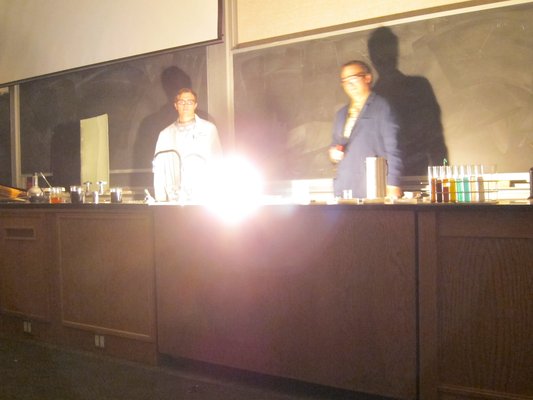Colorful Chemistry
Nov. 3, 2015
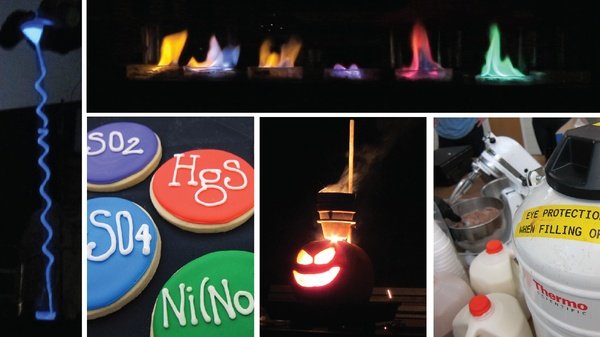
“Color is important because it helps us see when a chemical reaction has taken place,” explains Dr. James Patterson to an eager crowd at his Thursday night magic show. He mixes two colorless liquids together in a beaker and holds it up high. “Watch carefully! We don’t want to miss the moment when the chemistry happens . . .” The people in the crowd hold their breaths. A moment passes in silence. Suddenly, the crowd gasps and bursts into applause. The liquid in the beaker has turned a dark, midnight blue—in the blink of eye!
National Chemistry Week, which takes place the third full week of October, is a favorite event for the university and the Provo community. Fourteen chemical magic shows, each featuring a different professor from the Department of Chemistry and Biochemistry, fill up every night with families and students. They come to see explosions, to eat liquid nitrogen ice cream, and to learn about science. This year’s theme, “Chemistry Colors Our World,” inspired dazzling color-related demonstrations.
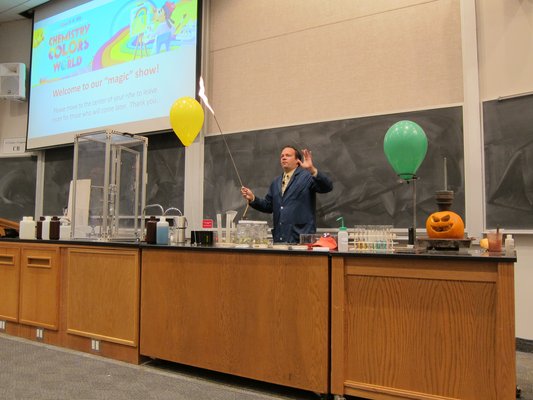
Dr. Patterson showed the importance of color in determining the heat of metal and the energy of light. He taught the audience how the phosphorescent color of a glow stick is evidence of a chemical reaction. A chemical in the liquid and a chemical in the plastic casing are separated by a thin layer of glass. When the glow stick is snapped, the glass shatters, allowing the chemicals to react with each other and change color.

The annual National Chemistry Week symposium, held Thursday, October 22, also focused on color. Dr. John Lamb spoke on the relationship between his two passions: chemistry and painting. “After I graduated with my PhD,” he said, “I said to my wife, ‘Now that I’ve devoted so much of my life to chemistry, I’d like to find a hobby.’ That Christmas, she gave me a set of paints.” Dr. Lamb spoke about pigments and about light. He explained, “If you look at a painting under sunlight and then under an incandescent lightbulb, the painting will actually look different because of the difference in the lights’ wavelengths.”
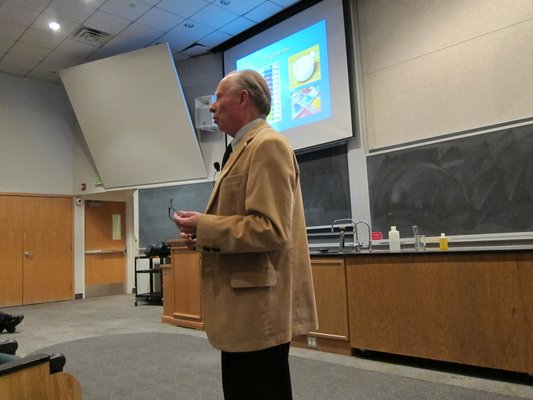
Uyen Nguyen, a color chemist formally of Kobo Products, Inc., also spoke about the importance of light. Chemists in the cosmetic industry use a lightbox to mimic sunlight, so they can evaluate the colors of their products. Despite precise measurements and tests, every batch of cosmetics is a slightly different color. For this reason, explains Nguyen, “we will always need color chemists. We try to measure color with machines, but machines can’t perceive color like humans can.” Nguyen also explained how the pigments used in cosmetics are much more limited than those used in painting, because they have to be safe for topical use.
Medieval Glassmakers didn’t use the kind of pigments that painters or cosmetic scientists use. Professor Rebecca Sansom explained that the only chemicals used to color glass were gold and silver salts. How do gold and silver make all the colors in stained glass? The secret, though the medieval artisans could not have known it, was nanoparticles. The size and shape of the metal nanoparticles could be manipulated by heat to produce different colors. “Most people think of stained glass as art, not science,” said Sansom, “but art and science overlap.”
Other highlights of the week included a poster session for faculty-mentored research groups held Friday, October 23, and the hands-on chemistry workshop for kids the following day. Y-Chem sold liquid nitrogen ice cream, as well as mugs and shirts, every day as part of their annual fundraiser.
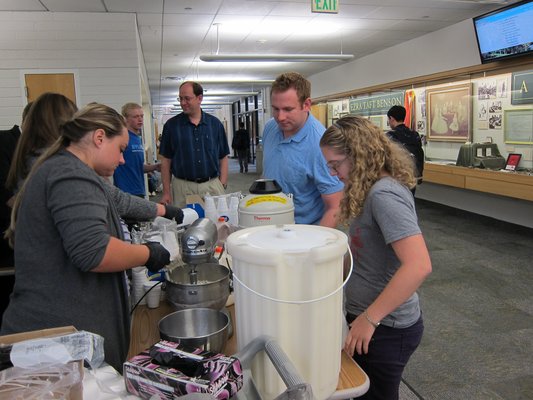
Mark your calendars for next year. National Chemistry Week will take place October 17-22, 2016.
